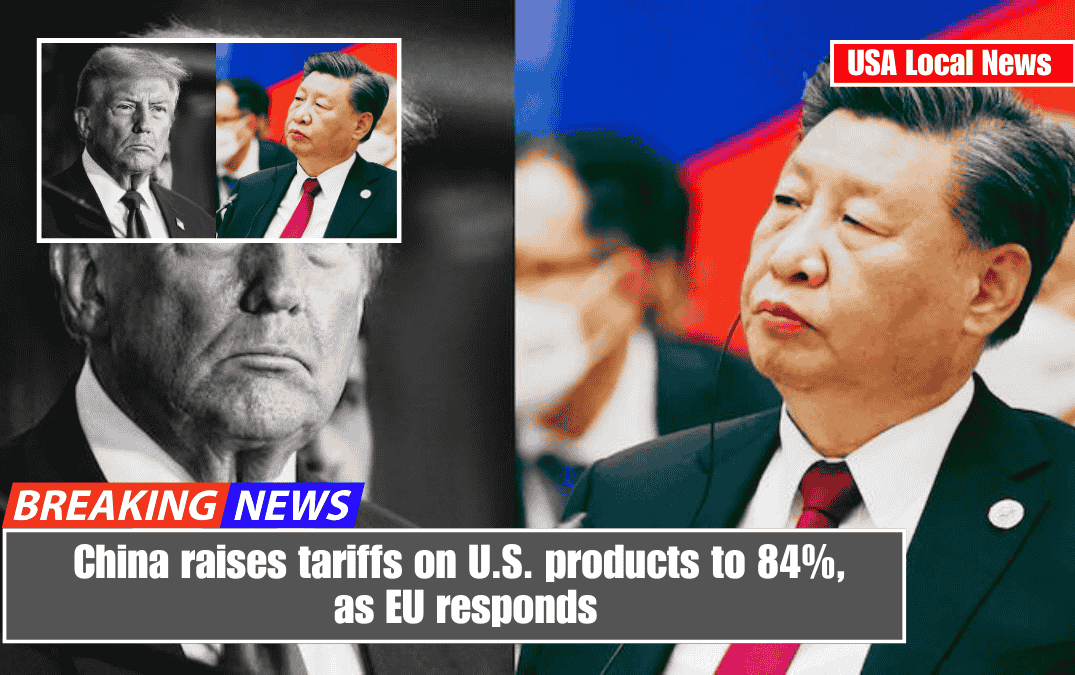China has raised its tariffs on US products to 84%, up from 34% previously announced, following President Trump’s 104% import duties on Chinese goods, which went into effect today.
Mr. Trump’s broad-based tariffs, which apply to imports from nearly every country, went into effect after midnight Eastern time in the United States. However, on Wednesday afternoon, the president announced that he is pausing most of the new import taxes for 90 days and lowering the “reciprocal tariff” rate to 10%, effective immediately.
At the same time, Mr. Trump announced that he is raising the tariff on Chinese imports to 125%.
“Based on the lack of respect that China has shown to the World’s Markets, I am hereby raising the Tariff charged to China by the United States of America to 125%, effective immediately,” according to his post on Truth Social.
The leader went on: “At some point, hopefully in the near future, China will realize that the days of ripping off the U.S.A., and other Countries, is no longer sustainable or acceptable.”
China decries U.S. “mistake”
China’s announcement indicates that Beijing is not backing down in a global trade war sparked by President Trump’s April 2 decision to impose so-called “reciprocal tariffs” on almost every country.
In response to that announcement, China stated that it would respond by imposing the same duty (34% at the time) on US imports, prompting Mr. Trump to impose an additional 50% tariff on Chinese imports.
Tariffs imposed by Mr. Trump will be paid for by US companies that import products from China. According to experts, these companies will likely pass on the cost of all or some of the import duties to American consumers, raising prices on everything from iPhones to Chinese-made clothing.
In an April 9 statement, China described Mr. Trump’s decision to impose an additional 50% tariff as a “mistake upon a mistake.” It also cited Mr. Trump’s tariffs as examples of “unilateralism, protectionism, and economic bullying.”
Beijing’s latest measures, announced on Wednesday, include adding 11 American companies to a list of “unreliable entities” that will prevent Chinese companies from selling them dual-use products. Among the companies are American Photonics and SYNEXXUS, both of which work with the US military.
So far, China has not shown any interest in bargaining. “If the U.S. truly wants to resolve issues through dialogue and negotiation, it should adopt an attitude of equality, respect, and mutual benefit,” said Ministry of Foreign Affairs spokesman Lin Jian.
According to the Centre for Economic Policy Research, China now controls approximately 35% of global manufacturing, compared to the United States’ 12%.
Beijing has also increased its exports to other countries, particularly developing countries, in an effort to reduce its reliance on the United States, according to a recent report by research firm Onyx Strategic Insights.
“China has spent the last five years Trump-proofing its economy — it has been working to nationalize supply chains, it has been working to penetrate different export markets, particularly in the developing world,” Scott Lincicome, a trade expert at the Cato Institute, a libertarian think tank, told CBS MoneyWatch.
The Chinese are “willing to endure the pain, thinking they can handle it longer than we can, and they might have a point.”
According to the U.S.-China Business Council, China was the United States’ third-largest export market in 2023, trailing only Canada and Mexico, with $145 billion in goods shipped to the Asian nation that year. Oilseeds and grains are the United States’ top exports to China, followed by oil and gas.
EU also hitting back
Separately, on Wednesday, the European Union announced its own retaliatory measures against the US. According to AFP, the 27-country trading bloc has imposed tariffs on more than $22 billion in US products, including soybeans, motorcycles, and beauty products.
“The EU considers US tariffs unjustified and damaging, causing economic harm to both sides as well as the global economy,” the European Commission said in a statement released after EU member states approved the measures.
The Trump administration imposed 25% tariffs on vehicles imported from the EU, as well as a 20% reciprocal levy.















